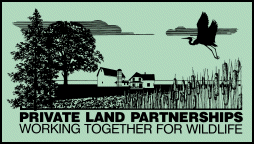 |
|
SEASONALLY
FLOODED WETLANDS
|
Scattered throughout Michigan are thousands of small seasonally wet areas that may only hold water from late fall to late spring or early summer. Seasonal
wetlands result from winter snowmelt and spring rains, and typically occur in low areas in woods and open fields. Some of these seasonal wetlands may not have visible standing water, but instead they have waterlogged soils. By mid-summer, most seasonal pools have dried out or are just barely moist. Although many of these seasonal wetlands may be less than a half-acre in size, they provide an important food source for migratory
songbirds, waterfowl, breeding and feeding areas for amphibians and reptiles, and critical winter food supplies for
wild turkeys, deer, and other birds and mammals. There are many different types of seasonal wetlands including seasonal pools,
springs and seeps, coastal plain
marshes, and lake plain prairies. If you are lucky enough to own any of these seasonal wetlands, you will notice they are used by a wide variety of wildlife.
Seasonal Pools
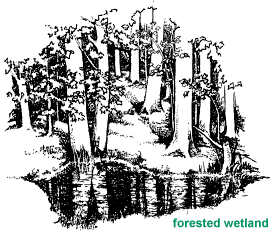 Seasonal pools are most often found in low, wooded areas that collect runoff water after spring thaw and heavy storms. Although usually found in woodlands, seasonal pools also occur in grasslands and active crop fields. These sites are rich in plants and invertebrates because of their shallow depth and warm temperatures, as well as the build up of decaying
organic material. Such conditions lead to a large output of algae, fungi, bacteria, invertebrates, and annual plants, all of which form the base of the food web. Seasonal wetland food webs provide nourishment for birds, mammals, amphibians, reptiles, and invertebrates. Seasonal pools are most often found in low, wooded areas that collect runoff water after spring thaw and heavy storms. Although usually found in woodlands, seasonal pools also occur in grasslands and active crop fields. These sites are rich in plants and invertebrates because of their shallow depth and warm temperatures, as well as the build up of decaying
organic material. Such conditions lead to a large output of algae, fungi, bacteria, invertebrates, and annual plants, all of which form the base of the food web. Seasonal wetland food webs provide nourishment for birds, mammals, amphibians, reptiles, and invertebrates.
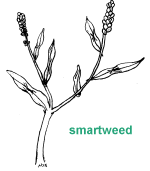 Wooded seasonal pools in particular are important areas for amphibians that prefer shallow water because they are free of predatory fish. Birds migrating through the area often rely on the large amount of insects found in these sites to help them get to their summer nesting area. Local birds also eat the insects to build up energy reserves for nesting and
brood rearing. Because these areas are wet for only a short period, the pools generate a large and diverse array of plants including jewelweed, iris, marsh-marigold, skunk cabbage, and blue-joint grass. Plant species found in more open areas include smartweed, beggarticks, nut-grasses, and wild millet. Many wildlife species depend upon seasonal pools for part of their life history. Examples are spotted salamanders, chorus frogs, spring peepers, leopard frogs, wood ducks, yellowthroats, swamp sparrows, muskrats, raccoons, deer, and turkeys. Wooded seasonal pools in particular are important areas for amphibians that prefer shallow water because they are free of predatory fish. Birds migrating through the area often rely on the large amount of insects found in these sites to help them get to their summer nesting area. Local birds also eat the insects to build up energy reserves for nesting and
brood rearing. Because these areas are wet for only a short period, the pools generate a large and diverse array of plants including jewelweed, iris, marsh-marigold, skunk cabbage, and blue-joint grass. Plant species found in more open areas include smartweed, beggarticks, nut-grasses, and wild millet. Many wildlife species depend upon seasonal pools for part of their life history. Examples are spotted salamanders, chorus frogs, spring peepers, leopard frogs, wood ducks, yellowthroats, swamp sparrows, muskrats, raccoons, deer, and turkeys.
Springs and Seeps
Springs and seeps occur in rolling or hilly topography where ground water percolates through the soil and emerges from the ground on lower slopes. This ground water develops into either small streams or small bodies of pooled
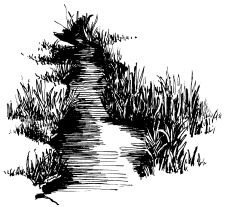 water. Springs are identified by their faster discharge rate and their tendency to come from a single, concentrated source forming a stream, while seeps are identified by their slow discharge rates usually forming pools. These areas are often surrounded by wet meadows, which may not be noticed in the summer due to dryness. Because many springs and seeps do not readily freeze during winter months, they offer a dependable source of water year around. Wildlife depend on springs and seeps when rivers, creeks, ponds, and other water sources are dry or frozen. The ground water that percolates at lower elevations often creates a snow-free area in winter and provides wildlife with access to green vegetation. As flocks of turkeys and herds of deer disperse from winter haunts, they seek these lush food areas. Because these small wetlands--some of which are so tiny as to be hardly noticeable--produce insects, they are attractive to many kinds of songbirds. Further, the constant, always-moving shallow water is favored by reptiles and amphibians, including several kinds of salamanders. water. Springs are identified by their faster discharge rate and their tendency to come from a single, concentrated source forming a stream, while seeps are identified by their slow discharge rates usually forming pools. These areas are often surrounded by wet meadows, which may not be noticed in the summer due to dryness. Because many springs and seeps do not readily freeze during winter months, they offer a dependable source of water year around. Wildlife depend on springs and seeps when rivers, creeks, ponds, and other water sources are dry or frozen. The ground water that percolates at lower elevations often creates a snow-free area in winter and provides wildlife with access to green vegetation. As flocks of turkeys and herds of deer disperse from winter haunts, they seek these lush food areas. Because these small wetlands--some of which are so tiny as to be hardly noticeable--produce insects, they are attractive to many kinds of songbirds. Further, the constant, always-moving shallow water is favored by reptiles and amphibians, including several kinds of salamanders.
Coastal Plain Marshes
Coastal plain marshes are an unusual and unique kind of seasonal wetland. Though called marshes, these wetlands are more like wet meadows, which are very wet in the spring, yet sometimes dry by late summer. Dating to an earlier geologic time, coastal plain marshes occur primarily along the western side of the Lower Peninsula and as far inland as the middle of the state. Ranging in size from a half-acre to over 20 acres, they do not necessarily exist along the Great Lakes shoreline. They are named after, and are unique because they boast a large number of plant species found along the Atlantic coastal plain. Coastal plain marshes are usually dominated by a rich variety of vegetation such as bushy aster, twigrush, and bulrush. These marshes are also home to over 45 rare plant species such as black fruited spike rush, dwarf bulrush, meadow beauty, and prairie dropseed. Coastal plain marshes usually dry up by late summer to the point were standing water only remains in the center of the wetland. No one knows for sure why they exist in Michigan or how their unusual plant species, most of which are
annuals, appeared. The natural periodic reduction of water levels favors these species and helps them to persist by exposing bare substrate for
germination.
Lake Plain Prairies
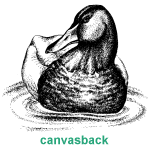 Lake plain prairies are coastal wet meadows occurring in scattered fragments along Lakes Michigan, Huron and Erie. These wetlands vary dramatically in their level of wetness from season to season, and even year to year. Lake plain prairies are coastal wet meadows occurring in scattered fragments along Lakes Michigan, Huron and Erie. These wetlands vary dramatically in their level of wetness from season to season, and even year to year.
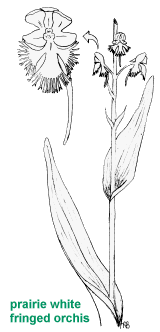 Many of these shallow wetlands function as a first step in the transition zone from
upland vegetation to deeper wetlands. They are the wet prairies leading to shallow marshes, deep marshes, and shallow open-water zones. Often used as feeding, breeding, and brood-rearing areas for shorebirds, wading birds,
waterfowl, amphibians, and reptiles, lake plain prairies can also serve as spawning grounds for muskellunge, smallmouth bass, yellow perch, northern pike, and other fish during years when high Great Lakes water levels flood these areas. Big bluestem, prairie cordgrass, bluejoint grass, and New England aster are examples of wet prairie plants that can withstand occasional, temporary flooding. This community is home to several rare plant species including prairie fringed orchis, tall green milkweed, creamy wild indigo, dwarf bulrush, and globe-fruited seedbox. In addition, several rare wildlife species exist in these prairies such as the fox snake, king rail, least bittern, and red-legged spittlebug. Many of these shallow wetlands function as a first step in the transition zone from
upland vegetation to deeper wetlands. They are the wet prairies leading to shallow marshes, deep marshes, and shallow open-water zones. Often used as feeding, breeding, and brood-rearing areas for shorebirds, wading birds,
waterfowl, amphibians, and reptiles, lake plain prairies can also serve as spawning grounds for muskellunge, smallmouth bass, yellow perch, northern pike, and other fish during years when high Great Lakes water levels flood these areas. Big bluestem, prairie cordgrass, bluejoint grass, and New England aster are examples of wet prairie plants that can withstand occasional, temporary flooding. This community is home to several rare plant species including prairie fringed orchis, tall green milkweed, creamy wild indigo, dwarf bulrush, and globe-fruited seedbox. In addition, several rare wildlife species exist in these prairies such as the fox snake, king rail, least bittern, and red-legged spittlebug.
However, as the shoreline drops in elevation and the soils become more saturated, the vegetation composition changes and red-top grass, giant golden rod, marsh aster, and other wet meadow plants begin to dominate. Bottle-brush sedge, lake sedge, and other sedges then take over where the soils are saturated most of the year. Depending upon the slope of the shoreline and the water table, this zone between wet prairies and sedges may be 30 feet wide or hundreds of feet wide. Human development of shorelines have destroyed many of these lake plain prairies that are valuable to wildlife.
Management Considerations
The following are options to consider when managing seasonal wetlands:
- Protect wetland water sources and surrounding uplands to provide critical habitats for wildlife. Draining or filling them for agriculture, housing projects, or other human use fragments wildlife habitat and alters water courses. Logging activities and livestock grazing around seasonal pools can have a major negative impact on water supply, temperature, and ground cover. Altering water courses to raise water levels or duration may reduce plant
diversity and insect production and can turn seasonal wetlands into more permanent wetlands such as marshes and swamps. On the other hand, reducing water levels or duration through draining or building roads can turn a temporary wetland, into an upland. Although practices that destroy one cover type may create another, the unique combination of ingredients found only in seasonal wetlands will be gone.
- Protect seasonally flooded wetlands from off-road vehicle (ORV) use. Coastal plain marshes and their associated mud flats, in particular, are prime targets for ORV users who like the "mud holes" but who often damage the soil surface, destroy valuable plants, and alter the
hydrology or water resource.
- Restore degraded or drained seasonal wetlands by providing a consistent source of water during the period of late winter through spring. Several organizations and agencies are interested in helping landowners manage seasonal wetlands. For additional information, see the
Wetland Restoration Techniques chapter in this
section.
- Maintain or establish vegetation in a strip at least 100 feet wide around the wetland to help protect them. Because of their low elevation on the landscape, wetlands are sinks for
nutrients, sediments, and pollutants. Manage surrounding uplands to trap
erosion and prevent nutrient overloading.
-
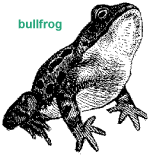 Never use any wetland as a dumping ground for refuse and debris, including logging waste, because these activities lead to contamination of the water, soil, plants, and animals. Before draining or filling any wetland, contact the Land and Water Management Division of the
Michigan Department of Environmental
Quality, which is responsible for regulating certain activities in wetlands. Never use any wetland as a dumping ground for refuse and debris, including logging waste, because these activities lead to contamination of the water, soil, plants, and animals. Before draining or filling any wetland, contact the Land and Water Management Division of the
Michigan Department of Environmental
Quality, which is responsible for regulating certain activities in wetlands.
- Remove exotic nuisance plants such as purple loosestrife, reed canary grass, and glossy buckthorn. These aggressive species have little or no value for wildlife and can quickly out -compete native plants in small seasonal wetlands.
- Build loafing platforms to attract turtles and certain species of waterfowl. Nesting structures for ducks, geese, and
songbirds, in or near seasonal wetlands, is normally unnecessary. However, nesting structures may help these species to use some areas.
In summary, to the casual observer seasonal wetlands may not appear to be important. Dry during much of the year, they nevertheless provide key food and cover for many kinds of animals during late winter through early summer when wildlife need high energy foods for the start of the breeding season. These wetlands are unique, provide important wildlife habitat, and are part of our diverse landscape. Because they figure importantly in the production and welfare of Michigan wildlife, seasonal wetlands should be protected at all times and restored whenever possible.
Last Revised: October 2, 1999
|

